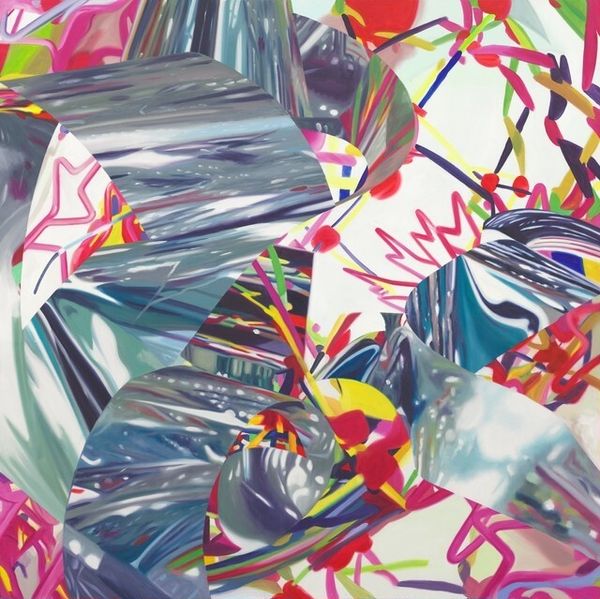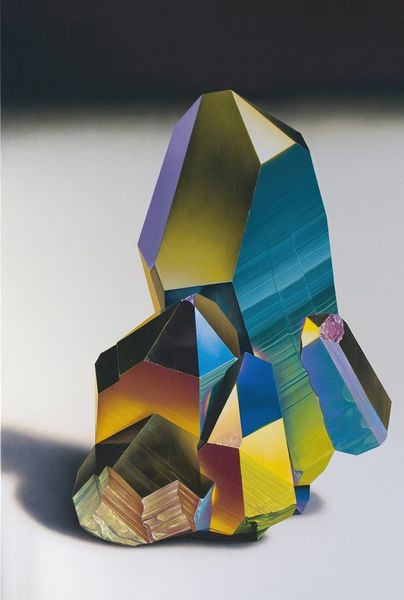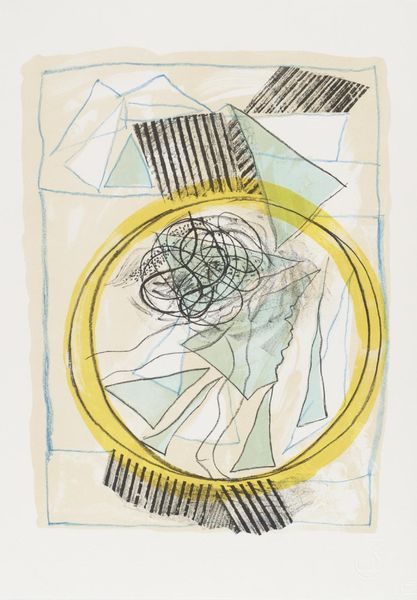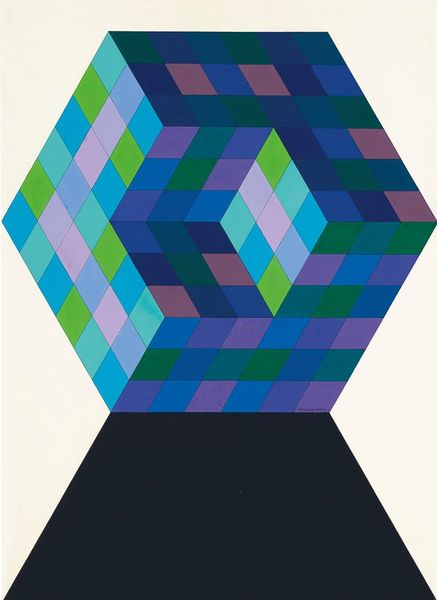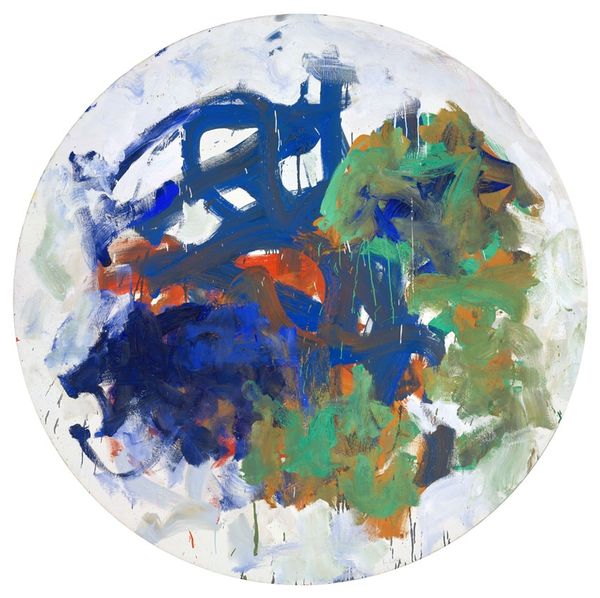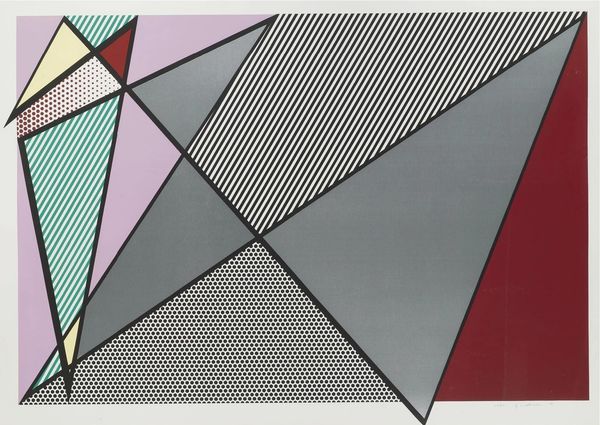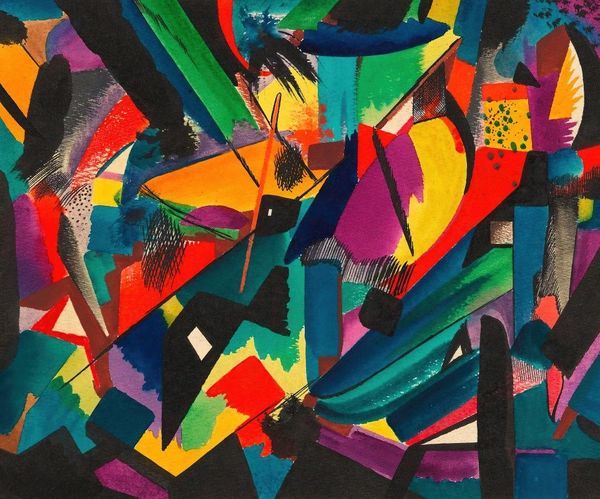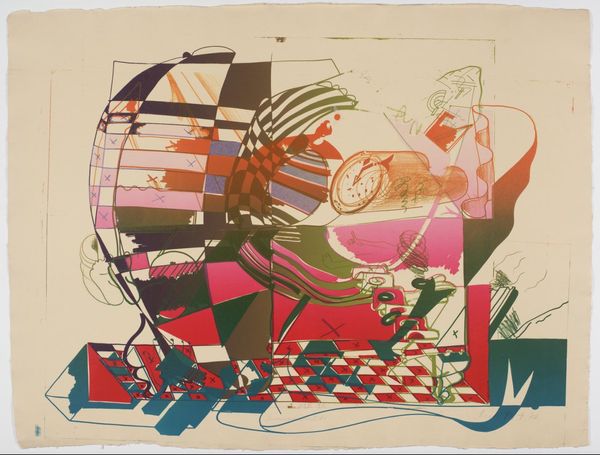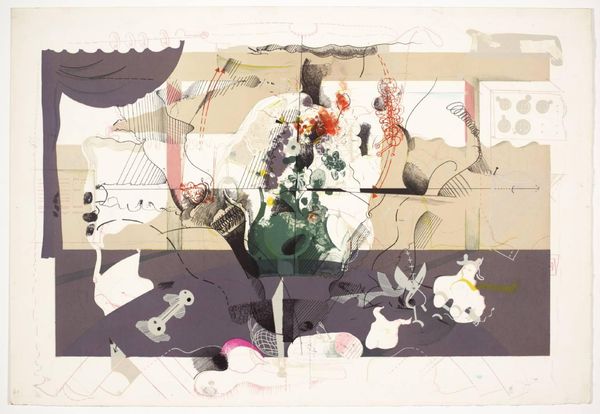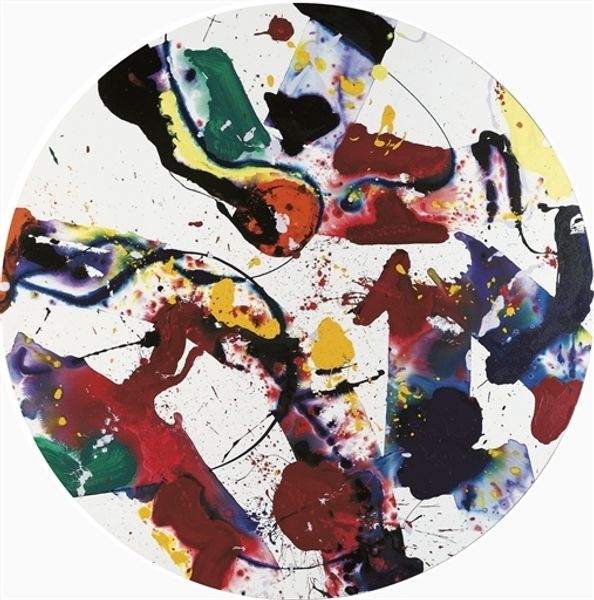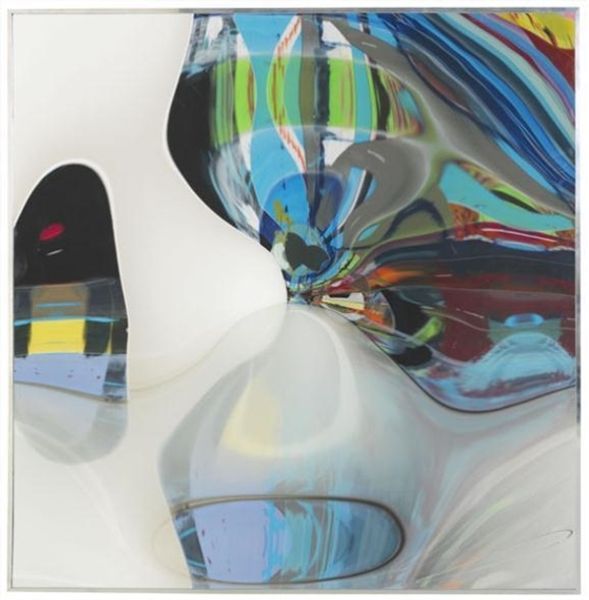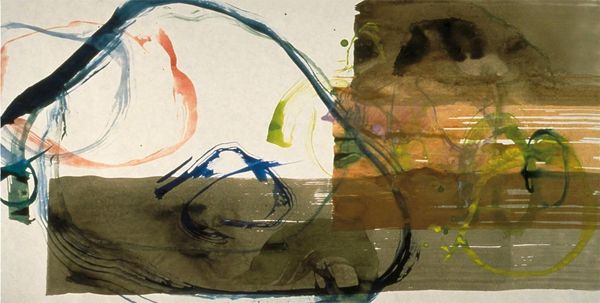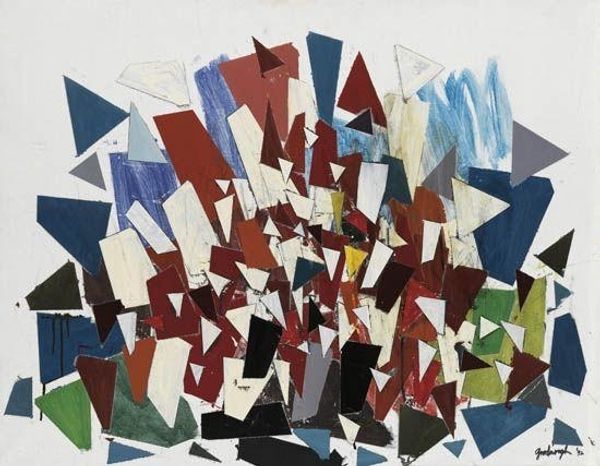
Copyright: Modern Artists: Artvee
Curator: Let's turn our attention to Andy Warhol's "Gems #4" from 1978, a mixed-media print showcasing the artist's venture into the realm of abstraction. Editor: My initial reaction is surprise; it’s less polished than some of his better known work. The color blocking feels both haphazard and compelling, a curious dance of luxury object and what feels like rough process. Curator: Warhol's embrace of abstraction during this period reflects the changing artistic landscape and a desire to challenge traditional notions of representation. One should always be careful, though, with presumptions about deliberate “roughness.” This could just as easily have been generated, mass produced, using unskilled labor. Editor: Yes, and I wonder what that choice implies about our perceived value of the "gem"? The crude hatching on one half really emphasizes the graphic nature of the piece; it reminds us this is manufactured image-making. And these strong geometric divisions of space reinforce this lack of depth. Curator: The geometric structure is definitely present and invites interpretations about order and control amidst what seems like disorder and imperfection. Considering his Factory environment, the reliance on silkscreen printing techniques speaks volumes. Editor: Indeed. Mass production has become deeply intertwined with this vision of modern American success; in a broader view, the work becomes about systems of creation just as much as it becomes about the thing that has been created. It is a celebration, critique, and record all in one. What's more precious – the idea of the gem or its production? Curator: It’s fascinating how Warhol transforms what one might perceive as flaws into an aesthetic signature, challenging the concept of 'flawless' artistic output, questioning, who, precisely, defines these categories. Editor: Absolutely, this piece provokes a conversation about the intersection of material processes, mass consumption, and how artistic value is constructed, and also distributed. Curator: Agreed, it reveals a facet of Warhol's practice that goes beyond mere surface-level appropriation and forces you to reckon with the history of production itself.
Comments
No comments
Be the first to comment and join the conversation on the ultimate creative platform.
